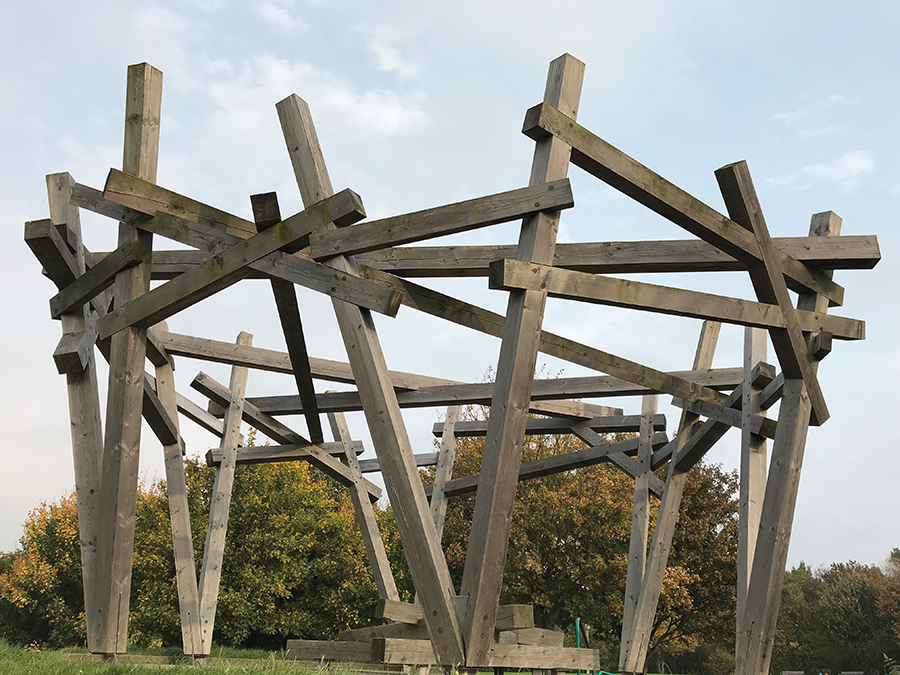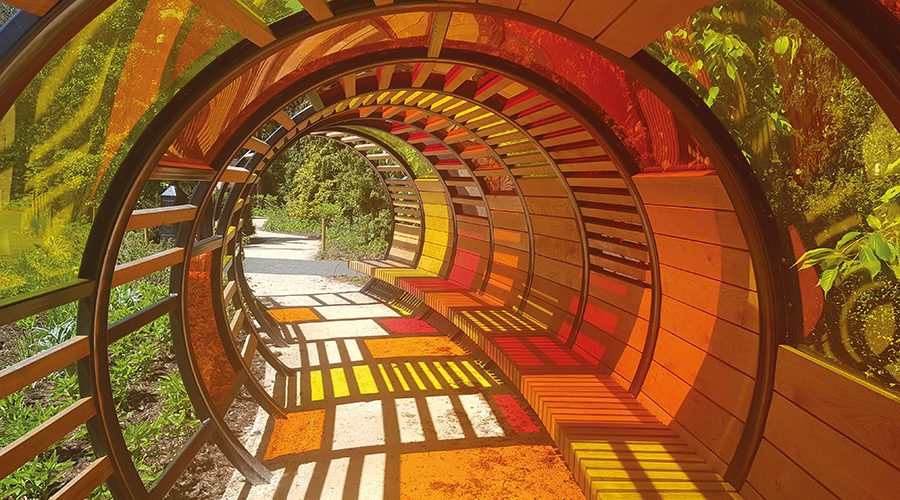Climate change has become a global priority and the public sector must adopt a radical and holistic approach to find solutions, one of which is sourcing sustainable high-quality hardscaping within public realm projects. Investing in locally-sourced, exceptionally durable public shelters increases the product life cycle and minimises long-term maintenance costs.
Contributor
All Urban specialises in supplying superior quality landscaping products and exclusively supplies Handspring Design’s public realm youth shelters. Together, they share best practice to deliver a guide on what to look out for when investing in high-quality shelters for public spaces.
Public safety and security is high priority when creating the design. A structure which has clear sight lines ensures that passers-by can see who is inside the shelter and users can also see passers-by. The Handspring Design Hoops which have recently been installed at the Royal Botanical Gardens, Kew are a good example of this, as coloured Perspex is used to create translucent walls.
When looking for sustainable and exceptionally durable materials, Handspring Design uses Oak and Douglas Fir (or European Larch) because they can be UK sourced from sustainable sawmills. FSC timber oak is used sparingly but improves with durability over time. When possible, Douglas Fir is used for larger projects. Both of these timbers turn silver with long-term exposure to UV.
One of the biggest considerations for outdoor shelters is long-term weathering. Designing a shelter with lots of flat, horizontal surfaces, will encourage rain water to sit in the fixings and on the surfaces, encouraging the wood to rot. Therefore creating a design with carefully thought out details which include slopes, angles and gaps ensures that the rain water runs off and does not pool on the shelter.

When a piece of wood is cut perpendicular to the grain, exposing the rings, it is called endgrain. It is important to ensure that these too are not incorporated into the design horizontally, as this is where the weather will get in and likely rot the timber when exposed to long-term weathering.
Creating an open-plan design provides temporary weather protection, rather than fully water-proofing which can create enclosed spaces which reduce public safety. The Handspring Design ‘Birds Nest’ shelter, smaller cousin of its larger Crow’s Nest viewpoint sculpture, is the perfect example of public safety and weather-proof design.
Another consideration when designing for longevity is how the wooden structure is fixed to the ground. It’s generally best practice to keep the timber away from the ground by at least 200mm. This is the rain water ‘splash zone’. Handspring uses galvanised steel flitch plates or box section ‘shoes’ to make the connection between timber and foundations, with drainage holes to let unwanted water escape. This minimises the risk of rotting.
Lastly, quality fixings can further minimise long-term maintenance costs. Handspring Design design shelters which detail as many timber to timber joints as possible. This means they depend less on fixings which can become surfaces for water to sit in. Where needed, they use stainless steel for oak and galvanised steel for Douglas Fir as these are exceptionally resistance to rust.
Handspring Design has a strong ethos on sustainability and with 20 years’ experience, it is an expert in designing and constructing public realm shelters. It specifically works with oak for steam bending and detailed complex structures with smaller section sizes.






